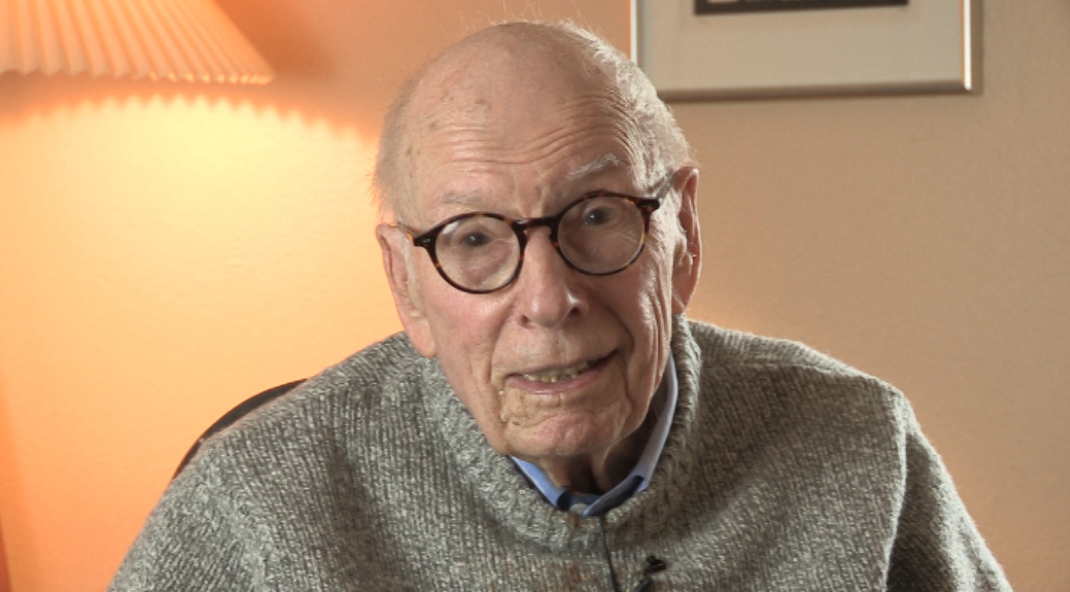NEXT STORY

Complemented on my thesis
RELATED STORIES

NEXT STORY

Complemented on my thesis
RELATED STORIES


|
Views | Duration | |
|---|---|---|---|
| 21. My inferiority complex | 175 | 01:28 | |
| 22. The inimitable William H Weston | 77 | 03:33 | |
| 23. A serendipitous discovery | 72 | 02:02 | |
| 24. Upstaged by slime molds | 70 | 02:30 | |
| 25. How slime molds grow | 65 | 03:08 | |
| 26. My eureka moment | 101 | 03:11 | |
| 27. Filming slime mold as it grows | 97 | 03:10 | |
| 28. What makes slime mold grow at right angles? | 57 | 03:29 | |
| 29. Ammonia is it! | 44 | 01:22 | |
| 30. Complemented on my thesis | 1 | 43 | 00:41 |


It turned out to be a much more general phenomenon because what you could do is you could put beads on the slug as it crawls. And you can put a bead which absorbs ammonia. And when you do that - I like activated charcoal - and then it will go towards the charcoal. But if you put it into something else, like, an inhibitor protein synthesis, and you remove again, the ammonia… Anyhow, there's lots of experiments you can show that ammonia is it. And then, in the meantime, other people have shown that they go towards oxygen. So in other words, if they have a choice of different amounts of oxygen, they tend to go where there's highest oxygen. So they go away from the highest ammonia, and towards the higher oxygen.
John Tyler Bonner (born in 1920) is an emeritus professor in the Department of Ecology and Evolutionary Biology at Princeton University. He is a pioneer in the use of cellular slime molds to understand evolution and development and is one of the world's leading experts on cellular slime molds. He says that his prime interests are in evolution and development and that he uses the cellular slime molds as a tool to seek an understanding of those twin disciplines. He has written several books on developmental biology and evolution, many scientific papers, and has produced a number of works in biology. He has led the way in making Dictyostelium discoideum a model organism central to examining some of the major questions in experimental biology.
Title: Ammonia is it!
Listeners: Christopher Sykes
Christopher Sykes is an independent documentary producer who has made a number of films about science and scientists for BBC TV, Channel Four, and PBS.
Tags: ammonia, slug, charcoal, oxygen
Duration: 1 minute, 22 seconds
Date story recorded: February 2016
Date story went live: 14 September 2016